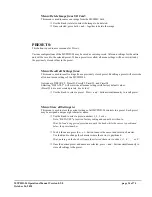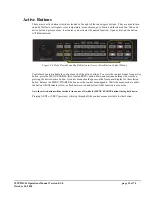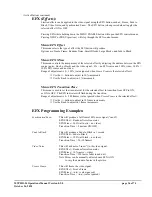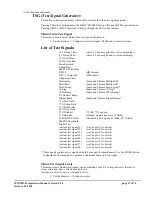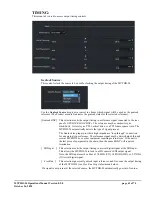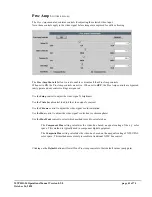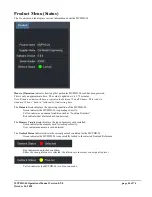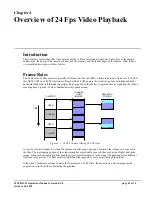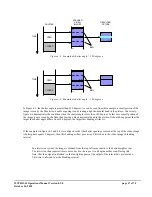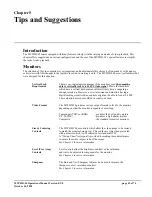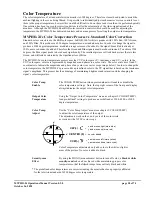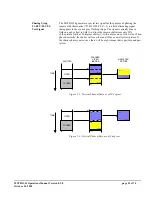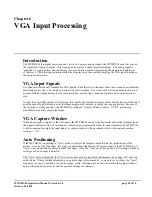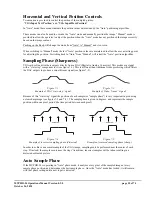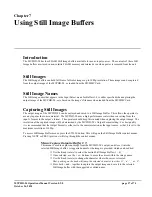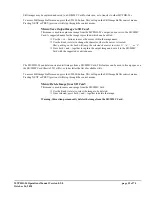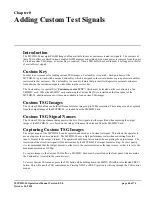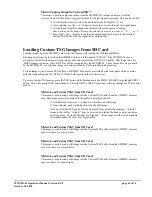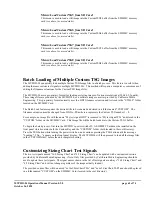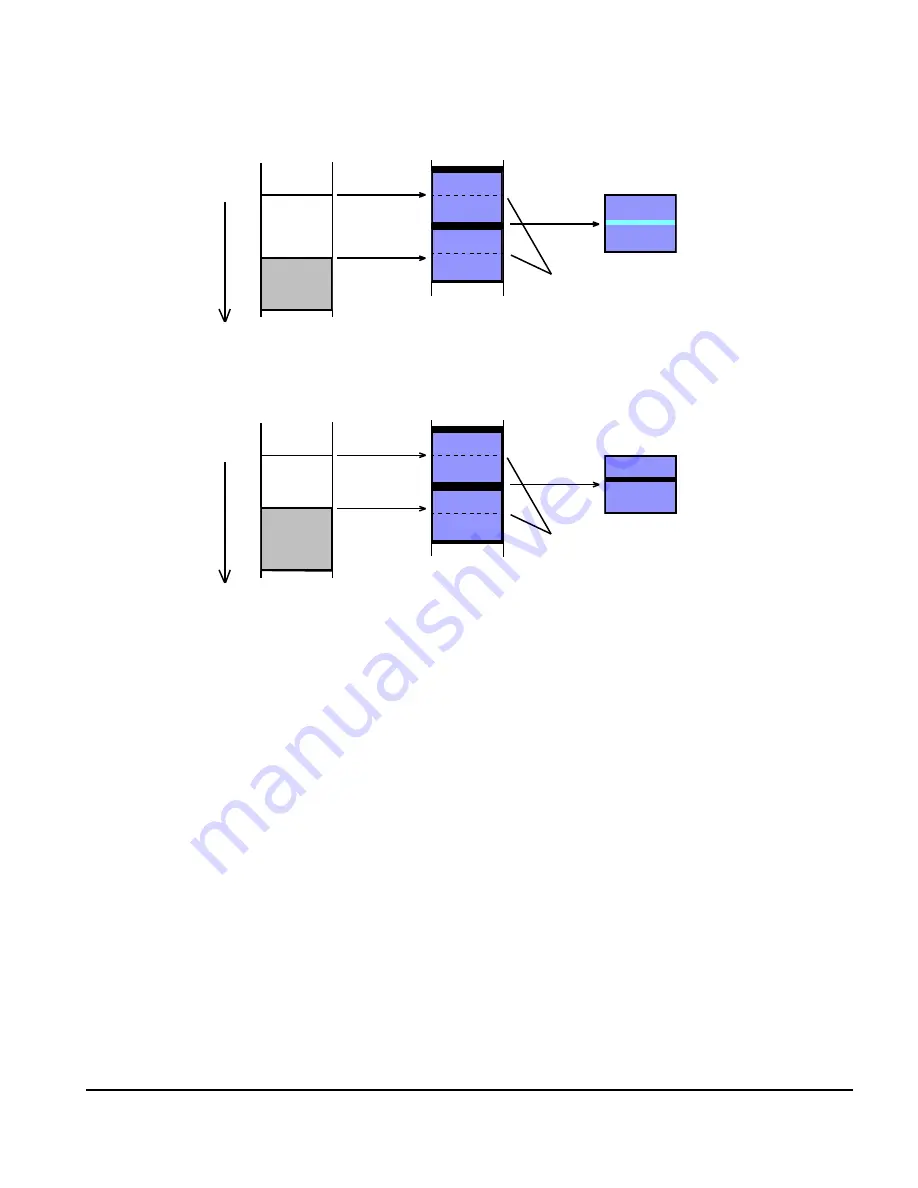
MVPHD-24 Operations Manual Version 0.9.0 page 47 of 74
October 26, 2020
SHUTTER
OPEN
TIME
TOP
BOTTOM
SCA NNED
VIDEO
IMA GES
TOP
BOTTOM
RESULTING
PICTURE
CLOSED
TOP
BOTTOM
TOP
50%
Figure 4-3. Example of shutter angle > 180 degrees.
OPEN
TIME
TOP
BOTTOM
TOP
BOTTOM
CLOSED
TOP
BOTTOM
TOP
50%
Figure 4-4. Example of shutter angle < 180 degrees.
In Figure 4-3, the shutter angle is greater than 180 degrees. As can be seen from this example, a small portion of the
image is seen by the film twice, double exposing it and creating a light horizontal band in the picture. Conversely,
figure 4-4 demonstrates the condition when the shutter angle is less than 180 degrees. In this case a small portion of
the image is never seen by the film, thus leaving a black horizontal band in the picture. It should be apparent that the
larger the shutter angle differs from 180 degrees, the larger this banding artifact is.
If the examples in figures 4-3 and 4-4 were aligned so that the shutter opening occurred at the top of the video image
(shutter phase equals 0 degrees), then this banding artifact goes away. This is due to the video image’s blanking
interval.
In a television system, the image is scanned from the top left corner down to the bottom right corner.
The television then requires time to move back to the top so it can begin another scan. During this
time, the video signal in blanked, so that no light appears at the output of the television’s picture tube.
This time is referred to as the blanking interval.


